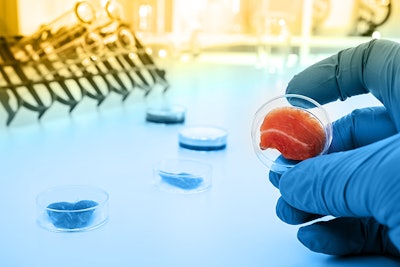
The Cultivated Meat Modeling Consortium (CMMC) is tackling one of the biggest barriers to bringing cultured meat to the consumer marketplace: the high cost of the growth medium.
Cultured meat is made using cells from animals that are grown in bioreactors in a laboratory setting. The process involves the use of a growth medium to stimulate cell growth. This step is very costly, limiting the amount of cultured meat that is produced and making the product too expensive for average consumers. The first burger made of cultured animal cells cost more than $280,000.
“Currently, the high cost of culture media is the main obstacle that hinders the commercial availability of cultured meat as the media bears the vast majority of the costs. of cultured meat. As of 2018, one pound of cultured meat costed $1,700USD, while in 2016 it was more than $18,000USD per pound,” explained Caroline Shafik, the Public Relations Manager for Insilico Biotechnology AG, a CMMC member.
“We decided to join the CMMC to engage in an interdisciplinary cooperation to move the area of clean meat forward. We want to bundle up with the best experts in the field to complement our expertise, and the CMMC is formed of the best-known partners in this area.”
Advocates of cultured meat, also known as lab-grown or cell-based meat, say the product offers greater flexibility and sustainability to producers than traditional agricultural methods.
How do they plan on reducing costs?
The group plans to develop computational modeling approaches that can be used to optimize growth processes and cultured meat product characteristics.
“Using computer modeling and the simulation of metabolic pathways that occur during the cell growth, we can predict and determine the optimal concentrations of expensive media components, so that we compose the media with the exact right concentration that allows the growing cells to efficiently use substrates leading to maximum growth,” Shafik said.
“Improved media composition will serve two purposes: cutting the cost on expensive media components by replacing costly substrates by cheaper ones and by optimizing the composition of media for improved growth, and lower production costs by increasing productivity.”
Like what you just read? Sign up now for free to receive the Poultry Future Newsletter.


















